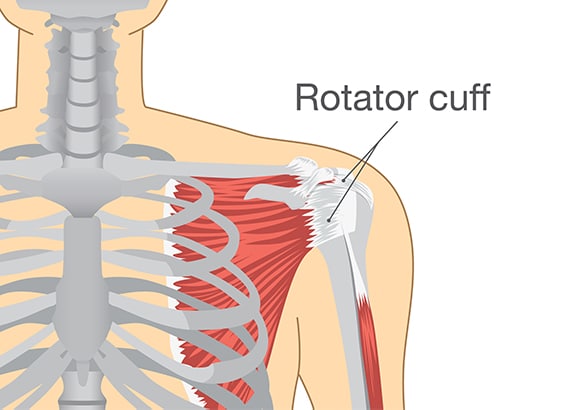When it comes to maintaining a healthy shoulder, no conversation is complete without mention of the rotator cuff (RC). The rotator cuff is a group of four muscles that work both individually and collectively. Together, they work to hold the upper arm bone (humerus) tight in the socket (glenoid fossa) of your shoulder blade (scapula), ultimately forming the shoulder (glenohumeral) joint. The muscles of the rotator cuff are the deepest muscles of the shoulder, surrounding the head of the humerus and providing stability.
The shoulder is the most mobile joint in your body. As you stretch your arms or raise them overhead, there is a rapid increase in forces that occur creating a significant need for stability at the shoulder joint.

For example, imagine reaching into your fridge and grabbing a gallon milk. If you kept the gallon of milk close to your body, you could probably hold it there for a minute or two. But if you held the gallon straight out in front of you, it would be difficult to hold this position for any significant length of time. This is both a testament to the relatively small size and fatigability of the RC muscles, as well as the way an outstretched arm strains the shoulder. Add in repetitious overhead or outstretched arm movements, in conjunction with a weak RC, and the chances of injury go up exponentially.
RC dysfunction can lead to shoulder pain and injury, which is one of the most common musculoskeletal (MSK) disorders alongside back, neck, and knee pain. Common RC dysfunctions include:
- strains
- tendonitis
- impingement
- tears
These dysfunctions are more likely to occur with impaired shoulder mobility, faulty biomechanics and movement patterns, poor posture, and non-ergonomic work activities. While each of these factors are important to address as early as possible, they become even more important to address as we age.
Luckily, RC injury and shoulder pain can often be avoided by a combination of rotator cuff-specific strengthening, shoulder stretching, and the modification of overhead activities like using a step stool or ladder.
